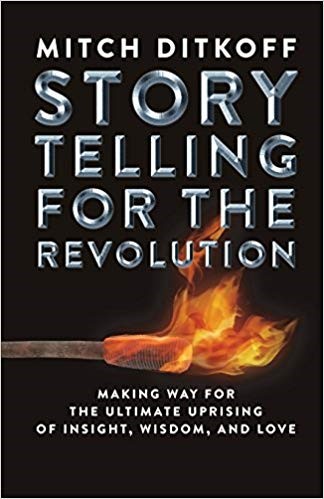CONNECTING THE DOTS

I remember, as a small child, playing a game called "Connect the Dots."
In front of me was an activities book composed of sheets of paper with nothing on them but numbered dots. My task was a simple one -- to draw lines between the dots, connecting each dot sequentially. #1 would get connected to #2. #2 would get connected to #3 and so on until each of the dots were connected, resulting in the creation of some kind of picture -- a hat, a house, a boat, or whatever the book publisher had in mind.
I found this fascinating, thrilled that I could make something, that out of nothing something would emerge -- something I could recognize, name, and later, talk about.
And while I did not grow up to become an artist, I did develop an interest in the phenomenon of pattern recognition, pattern making, and the various ways in which human beings construct their own reality.
As I got older, it became clear to me that this same children's game of connecting the dots had played itself out, in human history, in many fascinating ways. What were the constellations, if not bigger kids -- the ancient Greeks and Babylonians -- connecting non-numbered dots in the night sky -- the product of their need to make sense out of what they saw.

And so Orion, Canis Major, the Big Dipper, and 84 other configurations of stars came into being -- points of light that were clustered and named by the earth's first farmers as a way to help them figure out when to plant and when to harvest.
And to help them remember the constellations they had configured, the farmers made up myths -- wild stories to remind them of the patterns in the sky so they could pass on what they had discovered to next generation.
But it wasn't only farmers who benefited from this connect-the-dots myth-making phenomenon. Ancient sailors did, too, adventurers whose long journeys across unchartered waters were navigated by watching man-made constellations in the skies to mark their position.
This is what human beings do. We connect the dots. We make patterns. And then we translate what we see into stories as a way to remember and communicate to others what we have conjured.
That's what stories are. First there is a point -- an isolated moment in time and space when something becomes perceivable -- a leaf falling, perhaps, a dog barking, a thief, a speck of light.
In and of itself, this perceptible thing is just an isolated dot. In the first instant when it becomes known to the observer, it is freestanding, independent, and unrelated to anything else in the universe. It is not connected to the past or the future. It is not the beginning of something or the end of something. There is no plot, no unfolding of events, no Act One, Scene Two. No nothing.
It just is.
But soon the story-making part of ourselves kicks in -- the constellation maker.
Ruled by a primal need for meaning and knowing, it begins to connect the dots, to make sense of what it sees. It draws invisible lines through time and space until it sees a picture in its mind, a recognizable shape that helps make sense of experience.
Standing beneath the infinite sky of possibilities, this innate pattern-making tendency brings orientation, comfort, and a newfound ability to communicate our subjective experience to others.
Some become movies. Some become books. Some become jokes. Some are told around the kitchen table or never at all.
Perhaps the most dramatic example of this is the phenomenon of creation myths -- the symbolic narratives of how the world began and how people first came to inhabit it. Every culture has their own -- elaborate cosmological stories with plots, sub-plots, characters, settings, obstacles and, more often than not, a whole bunch of deities.
Deconstruct any scripture or holy book and you will discover that its DNA is story -- parables, allegories, and tales that have become the human shorthand for delivering meaningful, memorable messages upon which we base our lives.
Now, here's where it gets really interesting. When the dots are numbered, and we proceed to connect them in the same, sequential progression, we always arrive at the same picture -- conclusions that everyone can agree on.
But when the dots are not numbered and the dot connectors (that's us, folks) realize we have a choice about how we connect the dots and whether to make the lines wiggly, wavy, bold, invisible, or straight, a very different picture emerges and a very different story gets told.
The simplest example of this is a husband and wife arguing.
While the same dots may be marked on the paper (or in the sky), the way in which the husband and wife connect the dots is very different, resulting in two very different and, often, conflicting stories. He sees it one way. She sees it the other. The result? The plot of many a modern day sitcom and a 50% divorce rate.
This phenomenon plays out on many other stages, as well. The Israelis, for example, connect the dots differently than the Palestinians. Virgos connect the dots differently than Leos. And the Native Americans connect the dots differently than America's Founding Fathers.
Psychologists attribute our dot connecting behavior to a cognitive principle they have reduced to three words: Motivation affects perception.
In other words, we see, they say, what we are primed to see, filtered through our need or desire of the moment -- a phenomenon which Eastern pundits have translated in their own, more metaphorical way, "When a pickpocket meets a saint, all he sees are pockets."
Done well, storytelling is a force for good, an extraordinary way to energize, inspire, and transmit wisdom. Abused, storytelling has an entirely different result.
Con artists, for example, tell believable stories, but only with the intention to deceive. The same holds true for corrupt politicians, spin doctors, cheating spouses, warmongers, the sensationalist media, gossipers, most of the advertising world, and anyone else attempting to bend the truth for their own personal gain.
The fact that human beings are story-making machines is undebatable. From the first Paleolithic cave paintings to the latest Hollywood blockbuster, that's what we do.
What's up for grabs is this: the kind of stories we choose to tell.
NOTE: I wrote this in 2015. It was supposed to be included in Storytelling at Work. It wasn't. Why? I forgot I'd written it. D'oh! I just rediscovered it 10 minutes ago.
Storytelling for the Revolution
MitchDitkoff.com
Child on ladder photo: Samuel Zeller
Night sky photo; Clint McKoy
Comments
Mitch,
I've followed you for quite some time. This is the first I've commented. By far, this is my favorite piece I've read from you (aside from your book). Beautifully written. The piece leaves me feeling "connected" to the human experience... a part of the story.
Enjoy your work!
Posted by: Deb ![[TypeKey Profile Page]](http://www.ideachampions.com/storytelling/nav-commenters.gif) at June 30, 2020 03:23 PM
at June 30, 2020 03:23 PM
Post a comment
Thanks for signing in, . Now you can comment. (sign out)
(If you haven't left a comment here before, you may need to be approved by the site owner before your comment will appear. Until then, it won't appear on the entry. Thanks for waiting.)







 If you like this blog, you might also like Mitch's other two blogs:
If you like this blog, you might also like Mitch's other two blogs: 